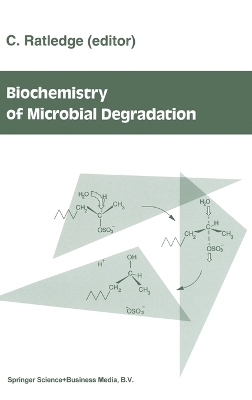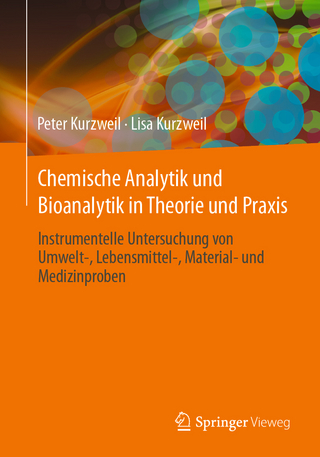
Biochemistry of Microbial Degradation
Seiten
1993
Kluwer Academic Publishers (Verlag)
978-0-7923-2273-3 (ISBN)
Kluwer Academic Publishers (Verlag)
978-0-7923-2273-3 (ISBN)
Brings together accounts of the mechanisms whereby microorganisms are able to degrade a wide variety of compounds. The compounds range from petroleum-derived materials to the degradation of the major natural materials that microorganisms may encounter in all types of habitat.
This work brings together a number of accounts of the mechanisms whereby microorganisms are able to degrade a wide variety of compounds. These compounds range from petroleum-derived materials, which continue to predominate in questions of environmental contamination and pollution, to the degradation of the major natural materials that microorganisms may encounter in all types of habitat. Both aerobic and anaerobic modes of attack are covered. The emphasis in all the chapters is upon the underlying biochemical pathways that microorganisms use: differences between bacteria, yeasts and moulds are highlighted whenever opportune and uses of microbial consortia for attack on the most recalcitrant molecules is also documented. Activity of microorganisms in the soil, groundwater and marine environments are all considered. The book should be of interest to all whose work brings them into contact with the results of microbial degradations. The consequences of microbial degradations may be beneficial as well as deleterious: an advantage with some compounds, a decided disadvantage with others.
The basis by which microorganisms achieve these attacks then provides the vital knowledge that will accelerate the former and, hopefully, retard the latter. The pathways of microbial degradations of all major classes of compounds are covered in a single volume. The diversity of microbial activities are clearly described and current advances in the applications of biochemistry, molecular biology, genetics, enzyme chemistry and engineering feature in almost every chapter.
This work brings together a number of accounts of the mechanisms whereby microorganisms are able to degrade a wide variety of compounds. These compounds range from petroleum-derived materials, which continue to predominate in questions of environmental contamination and pollution, to the degradation of the major natural materials that microorganisms may encounter in all types of habitat. Both aerobic and anaerobic modes of attack are covered. The emphasis in all the chapters is upon the underlying biochemical pathways that microorganisms use: differences between bacteria, yeasts and moulds are highlighted whenever opportune and uses of microbial consortia for attack on the most recalcitrant molecules is also documented. Activity of microorganisms in the soil, groundwater and marine environments are all considered. The book should be of interest to all whose work brings them into contact with the results of microbial degradations. The consequences of microbial degradations may be beneficial as well as deleterious: an advantage with some compounds, a decided disadvantage with others.
The basis by which microorganisms achieve these attacks then provides the vital knowledge that will accelerate the former and, hopefully, retard the latter. The pathways of microbial degradations of all major classes of compounds are covered in a single volume. The diversity of microbial activities are clearly described and current advances in the applications of biochemistry, molecular biology, genetics, enzyme chemistry and engineering feature in almost every chapter.
I. Structures of extracellular amphiphiles: A. Bioemulsifiers. B. Structures of biosurfactants. 1. Clycolipids. 2. Acylpoyols. 3. Lipopeptides. II. Biosynthetic routes to biosurfactants: A. Glycolipids. B. Acylpolyols. C. Lipopeptides. III. Microbial growth and kinetics of biosurfactant formation: A. Models of alkane uptake. B. Growth and biosurfactant production. IV. Biosurfactants in natural habitats.
| Zusatzinfo | references, index |
|---|---|
| Sprache | englisch |
| Einbandart | gebunden |
| Themenwelt | Naturwissenschaften ► Biologie ► Biochemie |
| Naturwissenschaften ► Biologie ► Mikrobiologie / Immunologie | |
| ISBN-10 | 0-7923-2273-8 / 0792322738 |
| ISBN-13 | 978-0-7923-2273-3 / 9780792322733 |
| Zustand | Neuware |
| Haben Sie eine Frage zum Produkt? |
Mehr entdecken
aus dem Bereich
aus dem Bereich
Buch | Softcover (2024)
Springer Vieweg (Verlag)
37,99 €


